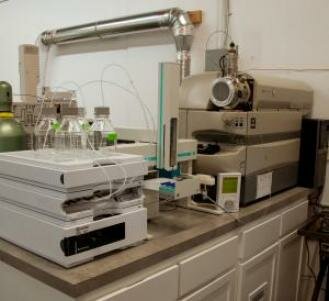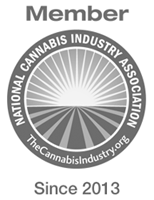Pesticide Screening

Oregon Growers Analytical utilizes both a liquid chromatograph tandem triple-quadrupole mass-spectrometer (LC-QQQ) as well as a gas-chromatograph tandem triple quadropole mass-spectrometer (GC-QQQ) to satisfy the instrument requirements for AOAC Official Method 2007.01, the internationally accepted method used to screen for pesticides in a variety of agricultural products, including cannabis’ closest cousin, hops. This top-of-the-line instrumentation also allows us to exceed State requirements and look for fungicides, acaricides, and plant growth regulators (PGRs), compounds which cannot be seen by a GC or even an LC-QQQ alone.
State testing requirements in OAR 333-008-1190 direct retailers to ensure that all of their cannabis products are screened for four classes of pesticides: Carbamates, Organochlorines, Organophosphates, and Pyrethroids, but each of these groups contain hundreds of individual compounds. It is impractical for any laboratory to screen for all of the pesticides included in these categories, let alone those fungicides, acaricides, and PGRs available on the market that are not covered by the Oregon Administrative Rules. Laboratories testing cannabis products for consumer safety in Oregon are not given regulatory direction on this issue; it's up to each lab to decide which compounds to include in their screening, and thus, the cannabis analytical community employs a wide diversity of instrumentation and methods.
Cannabis is a complex sample matrix, requiring a much more in-depth analysis than most commodities. Many labs are using either inappropriate instruments and/or methods when screening cannabis products for pesticides. For example, the ELISA method cannot target specific compounds or confirm findings, and EPA Method 8270 doesn't cover most compounds in use by cannabis cultivators. Labs not doing confirmatory runs put vendors and PRFs at risk financially with false-positives; labs that rely only on a GC/MS or GC/FID to look for pesticides put the health of consumers at risk with false-negatives. We routinely find pesticides on products that have been given a clean bill of health by other labs and are proud of our reputation as the most stringent cannabis laboratory in the nation.
Visit our Tumblr page for a blog post that includes more information.
New regulations coming in October of 2016 require that all cannabis labs in Oregon test for a standardized list of pesticide compounds. As a part of our ORELAP accreditation process, OG Analytical participated in the first ever pesticide proficiency test for the cannabis analytical community in early May of 2016, and passed with flying colors.
The table below includes the list of pesticide analytes we routinely screen for.**
|
|
||||
|---|---|---|---|---|
| Abamectin* | Aldicarb°* | Azinphos Methyl (Guthion)° | Bifenazate°* | Bifenthrin°* |
| Carbaryl (Sevin)°* | Carbofuran°* | Chlorpyrifos (Dursban)°* | Coumaphos° | Cyfluthrin°* |
| Cypermethrin°* | Deltamethrin° | Diazinon°* | Dichlorvos (DDVP)°* | Dimethoate°* |
| Ethoprophos°* | Fensulfothion° | Fenthion° | Fenvalerate° | Imazalil* |
| Imidacloprid* | L-Cyhalothrin° | Malathion°* | Metalaxyl°* | Methiocarb° |
| Methomyl° | Mevinphos (Phosdrin)° | Myclobutanil* | Naled°* | Oxamyl° |
| Paclobutrazol (PBZ)* | Permethrin°* | Piperonyl Butoxide (PBO)* | Propoxur°* | Spinosad A/D* |
| TEPP° | Tetrachlorvinfos (Stirofos)° | |||
° included in target list in current Oregon Administrative Rules
* included in target list in upcoming Oregon Administrative Rules
**This is a dynamic list and may not be comprehensive. Last updated: September 22nd, 2015 by bsherman. PLEASE CONTACT US FOR THE MOST CURRENT LIST OF PESTICIDES WE SCREEN FOR.



